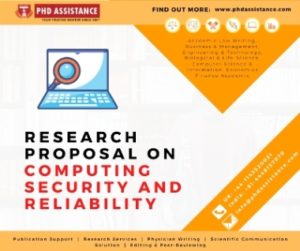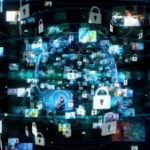Research proposal on Computing Security and Reliability
From introducing new international standards to having an important role to play in several industries, computer science is one of the powerful subjects right now. You cannot guess a single area that does not need computer systems or efficient networking options. Because Technology and Computer Science go together for any field.
Stating this, there are a few core subjects inside computer science that is unpredictable in its future use. One such case is with computing technologies.
You would have come across articles and official journals, talking about the impact, applications and other exciting features of cloud computing. But geeks and general computing-lovers will know that there are 2 more challenges to handle – computing security and reliability. Before entering deep into the challenges, let us first understand a few characteristics of computing. Getting an insight into these concepts can even help you in the narrowing down your search for getting the ideal dissertation proposal writing service, according to your project’s challenge and expectation.
Things to know (Vancabdy, 2013) about Computing
The following pointers will help you understand the basic definition and features of cloud computing. The context that follows below is from the Research perspectives of the ‘Guide to Computer Network Security’:
- The cloud technology is undefinable on many aspects and is not predictable with ease on its future scope. This cloud system would be the fundamental platform to other next-generation computing protocols.
- The support system to building a solid cloud computing foundation includes many proven innovations such as browsing platforms, service-oriented technologies, virtualization, service legal agreements, autonomic systems and the list goes on.
- Speaking of its characteristics, cloud computing is an on-demand self-service domain that comprises of measured servicing, flexibility, rapid elasticity. The features will differ across other computing models.
Irrespective of its application or the model framed, cloud computing technologies have a lot of real-time benefits. Yet, the fullest potentials are gained only if the 2 major issues of security and reliability are rectified. There are a few Research studies that try to combine both these issues into one – SRASA.

Get a general idea of what SRASA is all about
SRASA or Security and Reliability Aware State Automaton (Bu et al., 2019) is a Theoretical Framework that describes a general, unified model of the 2 individual entities reliability and security. Due to the lack of a formal practise in cloud computing technologies, the SRASA framework has likely chances to describe solutions to the issues of data privacy and security through an orderly pattern. So how does a system process these things?
Well, SRASA is a sketch based on the idea of combining both abstract and physical machine sates with a 22-tuple finite machine modelling platform. As of now, it is predicted that from the functional level examination to a higher stage of gate-level design, cloud computing security frameworks similar to SRASA should cover every aspect the computer system in a unified automated way. But this is not a simple process and requires extensive knowledge and expertise about all the factors that influence the security and reliability of the system.
- Researchers have also suggested that it would be possible to form a generalized structure at first and then moving onto the specified issues of cloud computing.
Now, you might think whether computing security and reliability is an issue only with cloud platforms. The answer would be NO (Yang et al., 2019) because there are a few more computing-related technologies that incur issues and threat relating to data security and reliability.
Extending the focus of security issues into other subject areas
More than expected attention is present for the domains of blockchain technology, smart grid, crypto-currencies and Internet-of-Things (IoT) due to their wide applications and perks. However, there is a common line of a problem among all the mentioned technologies. None other than security.
Considering the edge of a networking system, these technologies are facing limited usage at times, due to the threat of decentralized management processes. Validity computation and data storage are also backend challenges considering computing platforms. Still, these are issues only when the project gets handled by large-scale requirements.
- Scalability enhancement
- Resource management
- Reliable access
When it comes to enhancing Computing Technology in a much better way, then new security systems along with are to be under development. One possible approach to resolve all these faults is through the creation of one single system that integrates both blockchain technology and edge computing, which is possible only through the long-run.
The whole idea of computing security and reliability would be incomplete without finishing the concept with 5G technology.
What happens if the upcoming 5G (Han et al., 2019) technology is a secured one?
The 5th generation (5G) approach of cloud or edge computing, if at all, a highly secured platform for users, the architecture would be more specialized and formal in its performance. Moreover, a decentralized structure, as stated before, will give you the best applications possible in a safe and secured environment. Check out the following scenarios in a secured computing zone with 5G technology;
- Both the central cloud and the edge cloud will comprise of a point of attachment between the tenants and mobile subscribers.
- Gives a sense of freedom for tenant governance and its subscribers as well.
- Subscription services will be retained, even if the connections related to backhaul is not available or limited in use.
- From virtual networking to physical modes, every subscriber would interact and sustain works in a trustable and safe environment.
Final thoughts
In the stance of discussing security issues with computing, if you are a researcher trying to focus on topics like these, then have a thorough literature analysis of your study. Cloud computing is a booming industry and PhD Dissertation Writing Service sites and scholars should keep in mind that your primary focus should be for security and reliability (Tchernykh et al., 2019).
Note that, if you opt for writing projects through any Eng. & CS Dissertation Research proposal service/help, then you should ensure to provide the applications and benefits of your project, alongside its limitations. Specific researches like resource computing, should include the presence of risk confidentiality, review every uncertainty of its use and suggest a possible solution to avoid breach issues such as denying access and information leakage.
References
- Bu, L., Dofe, J., Yu, Q. & Kinsy, M.A. (2019). SRASA: a Generalized Theoretical Framework for Security and Reliability Analysis in Computing Systems. Journal of Hardware and Systems Security. [Online]. 3 (3). p.pp. 200–218. Available from: http://link.springer.com/10.1007/s41635-018-0047-0.
- Han, B., Wong, S., Mannweiler, C., Crippa, M.R. & Schotten, H.D. (2019). Context-Awareness Enhances 5G Multi-Access Edge Computing Reliability. IEEE Access. [Online]. 7. p.pp. 21290–21299. Available from: https://ieeexplore.ieee.org/document/8637933/.
- Tchernykh, A., Schwiegelsohn, U., Talbi, E. & Babenko, M. (2019). Towards understanding uncertainty in cloud computing with risks of confidentiality, integrity, and availability. Journal of Computational Science. [Online]. 36. p.p. 100581. Available from: https://linkinghub.elsevier.com/retrieve/pii/S1877750316303878.
- Vancabdy (2013). Cloud Computing Security, Reliability and Availability Issues – PowerPoint PPT Presentation. [Online]. 2013. Available from: https://www.slideserve.com/van/cloud-computing-security-reliability-and-availability-issues.
- Yang, R., Yu, F.R., Si, P., Yang, Z. & Zhang, Y. (2019). Integrated Blockchain and Edge Computing Systems: A Survey, Some Research Issues and Challenges. IEEE Communications Surveys & Tutorials. [Online]. 21 (2). p.pp. 1508–1532. Available from: https://ieeexplore.ieee.org/abstract/document/8624417.
 Next Post
Next Post
